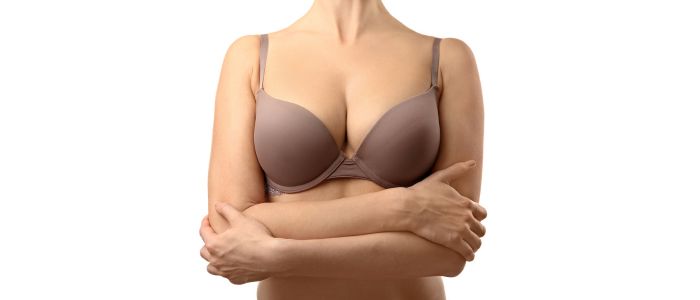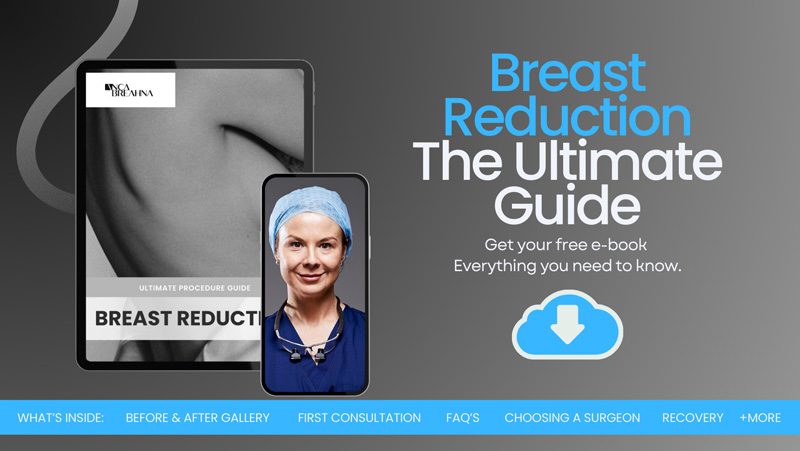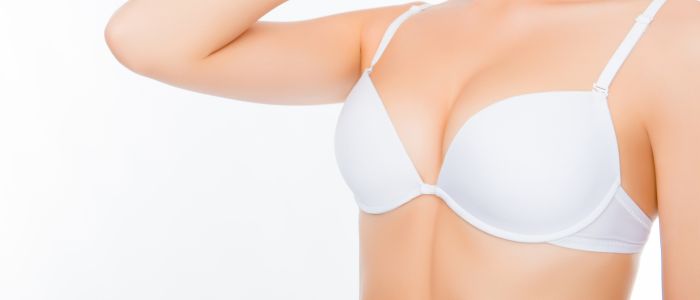
What to Expect during Recovery after Breast Reduction Surgery
One of the most common surgeries that many individuals undergo, often accompanied by a whirlwind of emotions and questions, is breast reduction. If you’re considering this procedure, or if you’re currently in the post-operative phase, one of the most pressing queries likely revolves around the enigma of recovery. What can one expect? What does “normal” look like after such procedure?
It’s a common and completely understandable curiosity. We all want to know how things might unfold after making such a choice. And as you think about this, you might find yourself flooded with information, stories, and testimonies from different corners of the world. However, it’s essential to remember that each person’s journey is unique. While there are shared experiences, what one person goes through might be different from what you might experience.
But what does “normal” mean in the context of breast reduction recovery? The term is broad and open to interpretation. For some, it might mean getting back to daily routines swiftly. For others, it could be about navigating the new feelings and sensations that come with the change. The idea is to understand that there isn’t a one-size-fits-all answer. Recovery is a process, and it varies. Why is this understanding important? Knowledge helps in setting expectations. If you’re prepared for a range of possibilities, you’re less likely to be caught off guard. It’s like knowing that weather can change – just because it’s sunny in the morning doesn’t mean it won’t rain in the afternoon. But if you have an umbrella handy, the rain might not be as much of an inconvenience.
Now, in our digital age, where stories and experiences are readily available at our fingertips, it can be easy to compare and contrast. Seeing someone else’s recovery might make you question your own. But it’s vital to focus on your journey and understand that each person heals and adjusts in their own time. What you see online is just a snapshot; there’s always more behind the scenes.
Anca Breahna, PhD, MSc, FEBOPRAS, FRCS (Plast) is a distinguished Consultant Plastic Surgeon with expertise in Aesthetic and Reconstructive Plastic Surgery. She stands out as one of the few female Plastic Surgeons in her region, bringing a unique female perspective to her practice, characterised by empathy, meticulous attention to detail, and personalised care.
Download Miss Anca Breahna Breast Reduction Guide

10 Symptoms That Are Normal during Breast Reduction Recovery
- Pain and Discomfort: After undergoing breast reduction, experiencing pain and discomfort in the initial days is entirely typical. The severity of the pain often depends on the specifics of the surgical technique used and the individual’s pain threshold. It’s important to follow your plastic surgeon’s guidance on pain management. Some patients find relief through prescribed medications, while others might be comfortable using over-the-counter painkillers. Always consult with your plastic surgeon before taking any medication. Remember, the discomfort you feel is a sign that your body is healing, and as the days go by, this should decrease
- Swelling and Bruising: Post-operative swelling and bruising are natural responses as your body heals. These reactions are due to the body directing more blood to the area, aiding in the healing process. Swelling usually peaks within the first week and then begins to subside. Keeping the area elevated and using cold compresses can help reduce swelling. Bruising, on the other hand, can vary in colour and intensity and often fades over two to three weeks. While it might be concerning to look at, it’s a normal part of recovery
- Tightness in the Chest: Feeling tightness or tension across your chest is a frequent sensation reported by patients. This is a result of the body adjusting to the reduced breast size and the repositioning of skin and tissues. As the healing progresses, the skin and surrounding muscles start to relax, and this sensation of tightness will diminish. Gentle movements and following post-operative exercises, if recommended by your plastic surgeon, can help in alleviating this feeling over time
- Changes in Nipple Sensitivity: Post-surgery, some patients report alterations in nipple sensitivity. This can range from heightened sensations to numbness. The changes in sensitivity occur due to the repositioning of the nipple or the surgical techniques employed. Over time, and as the nerves heal, many patients find their sensitivity returning to normal or near-normal levels. It’s essential to be patient with your body during this phase and discuss any prolonged changes with your plastic surgeon
- Scarring: Scarring is a natural aspect of the healing process after any surgical procedure. The appearance and location of the scars depend on the surgical technique chosen by your plastic surgeon. Proper incision care can assist in ensuring scars heal well. Over time, these scars tend to fade, becoming less noticeable. There are also treatments and creams available that can further aid in reducing scar appearance. Consult with Anca for recommendations tailored to your situation
- Limitations in Activity: Recovery means giving your body the time it needs to heal. Patients are often advised to avoid strenuous activities, heavy lifting, or any activity that puts undue pressure on the chest. This period of rest ensures the surgical site heals correctly, minimises the risk of complications, and ensures the best possible outcome from the surgery. Over weeks, and with your plastic surgeon’s go-ahead, you can gradually reintroduce activities into your routine
- Special Bras: Following surgery, the importance of wearing a specific type of bra cannot be stressed enough. These bras offer the necessary support without putting pressure on the incisions. They help in shaping the breasts during recovery and can significantly aid in reducing swelling. Your plastic surgeon will provide guidance on the type of bra to wear and the duration
- Care of Incisions: Proper incision care is essential for optimal healing and minimising scarring. You’ll be advised to keep the area clean and dry. Regularly inspecting the incisions for signs of infections, like increased redness or unusual discharge, is also vital
- Emotional Responses: Physical changes often come with emotional reactions. The aftermath of the surgery might bring about feelings of joy, relief, worry, or even impatience with the healing process. Such feelings are common and a part of adjusting to the new changes. It’s helpful to have a support system, like friends or family, to talk through these emotions. Additionally, some hospitals and clinics offer support groups or counselling for post-operative patients
- Follow-Up Appointments: Routine check-ins with your plastic surgeon are standard and beneficial. These visits offer an opportunity for the surgeon to assess the healing process and for you to voice any concerns or queries. Anca will check for signs of complications and ensure the scars are healing well. These appointments are a crucial aspect of your recovery journey, ensuring everything is on track.
10 Symptoms That Are Not Normal After Brest Reduction Recovery – When to Contact Your Plastic Surgeon
- Severe Pain: While a certain level of discomfort is expected after breast reduction, experiencing persistent and extreme pain isn’t typical. Remember, you know your body best. If the pain feels out of the ordinary or is not relieved with the recommended pain medication, it might be signalling an issue. It’s always better to consult with your plastic surgeon in such cases. They can provide guidance or adjustments to your pain management plan, ensuring your recovery remains on track
- High Fever: Running a fever can be alarming, especially after undergoing a procedure. A mild fever could be a sign that your body is healing. However, if you experience a high temperature coupled with symptoms like chills, it might be pointing towards an infection. Do reach out to your doctor to discuss any fever you experience post-operation. Early detection of potential infections can lead to timely and effective treatments
- Foul-smelling Discharge: While some discharge from the surgical site can be expected, any discharge with an unpleasant odour isn’t typical. This could be a symptom of an underlying infection. Maintaining the cleanliness of the surgical area is vital, but if you notice any odorous discharge, schedule an appointment with your plastic surgeon promptly
- Unusually Rapid Swelling: Swelling is a part of the recovery process. However, if you notice one or both breasts swelling suddenly and significantly, this isn’t typical. It could indicate a haematoma or another underlying issue. Monitoring such changes and reaching out to your doctor can prevent further complications
- Changes in Skin Colour: Noticeable changes in the colour of the skin on or around your breasts, such as bluish or very pale hues, can be concerning. This might suggest issues related to blood circulation in the area. Always be vigilant about such changes and inform your plastic surgeon if you spot any
- Breast or Nipple Coolness: A cool sensation on the breast or nipple isn’t a common recovery symptom. Like skin discoloration, this could be pointing towards blood flow problems. It’s essential to maintain regular checks on the temperature of the area and consult your plastic surgeon if you detect any coldness
- Loss of Sensation: While temporary changes in breast or nipple sensitivity can occur after surgery, prolonged numbness isn’t typical. If you experience extended periods where you can’t feel any sensation in these areas, inform your surgeon. It’s essential to keep track of your body’s changes and communicate them
- Red Streaks: Red streaks extending from the surgical site or around your breasts can be a sign of lymphangitis, an infection that affects lymphatic vessels. If you notice any such streaks or lines, don’t wait. Reach out to your doctor for a thorough check-up
- Continuous Oozing or Bleeding: Post-surgery, some bleeding is expected. However, continuous bleeding or oozing from the surgical site after the immediate recovery phase isn’t common. Ensure you’re not overexerting yourself and consult with your plastic surgeon about any persistent bleeding
- Shortness of Breath or Chest Pain: Experiencing difficulty in breathing or sudden chest pain after breast reduction isn’t typical. Such symptoms could be indicative of a serious underlying issue, such as a blood clot. Seek immediate medical attention if you experience these symptoms
FAQs about Breast Reduction Recovery
How long will it take for me to fully recover from a breast reduction surgery?
- The initial recovery period usually lasts about 2-3 weeks, during which time you should avoid heavy lifting and strenuous activities. Complete healing and settling of the breasts can take several months. It’s essential to follow your plastic surgeon’s post-operative instructions and attend all follow-up appointments to ensure a smooth recovery.
Will I have visible scars after the surgery?
- Scarring is a natural part of the healing process after any surgical procedure. The appearance and location of the scars depend on the surgical technique used. With proper care and time, scars generally fade and become less noticeable. There are treatments and creams available that can aid in reducing scar appearance, but always consult your plastic surgeon before applying anything to the surgical area.
Can I wear a regular bra during the recovery period?
- After the surgery, you’ll likely be advised to wear a special post-operative or compression bra. This type of bra offers support and helps reduce swelling without putting undue pressure on the incisions.
What if I experience severe pain or unusual symptoms during my recovery?
- Some pain and discomfort are expected after the procedure, but if you experience severe pain, unusual swelling, discharge, or any other symptoms that concern you, it’s important to contact your plastic surgeon or healthcare provider immediately. Early detection and treatment of potential complications can prevent more serious issues.
Will I be able to breastfeed after a breast reduction?
- Breastfeeding after a breast reduction is possible, but it might be more challenging than before the surgery. The procedure may affect some milk ducts, making it harder for some women to produce enough milk. If you’re considering future pregnancies and breastfeeding, it’s important to discuss this with your plastic surgeon before the procedure.
Further Reading about Breast Procedures with Anca Breahna
- Read Anca’s Breast Implant Removal and Replacement Surgery Page
- Read Anca’s Breast Reduction Surgery Page
- Read Anca’s Plastic Surgery Recovery Information Page
- Read Anca’s Blog about How to Fix Saggy Breasts
- Read Anca’s Blog about Reduce Swelling and Bruising after Breast Reduction Surgery
- Read Anca’s Blog Breast Reduction for Adolescents and Young Women
- Read Anca’s Blog about How Soon Can I Exercise after Breast Reduction Surgery
- Read Anca’s Blog about Back, Shoulder and Neck Pain caused by Large Breasts
- Read Anca’s Blog about Private Breast Reduction Surgery in UK
- Read Anca’s Blog about 10 Things to Consider Before a Breast Reduction
- Read Anca’s Blog about Who Is the World’s Best Breast Reduction Surgeon?
- Read Anca’s Blog about How to Choose the Right Size for Breast Reduction
Medical References about Breast Reduction
- Breast Reduction – NCBI
- Breast Reduction Surgery – Mayo Clinic
- Breast Reduction Surgery – WebMD
- Breast Reduction – Cleveland Clinic
- Breast Reduction Surgery: Everything You Need to Know – Medical News Today



 Ms Anca Breahna, PhD, MSc, FEBOPRAS, FRCS (Plast) is a highly regarded Consultant Plastic Surgeon specialising in the field of Aesthetic and Reconstructive Plastic Surgery. Anca performs a range of
Ms Anca Breahna, PhD, MSc, FEBOPRAS, FRCS (Plast) is a highly regarded Consultant Plastic Surgeon specialising in the field of Aesthetic and Reconstructive Plastic Surgery. Anca performs a range of 